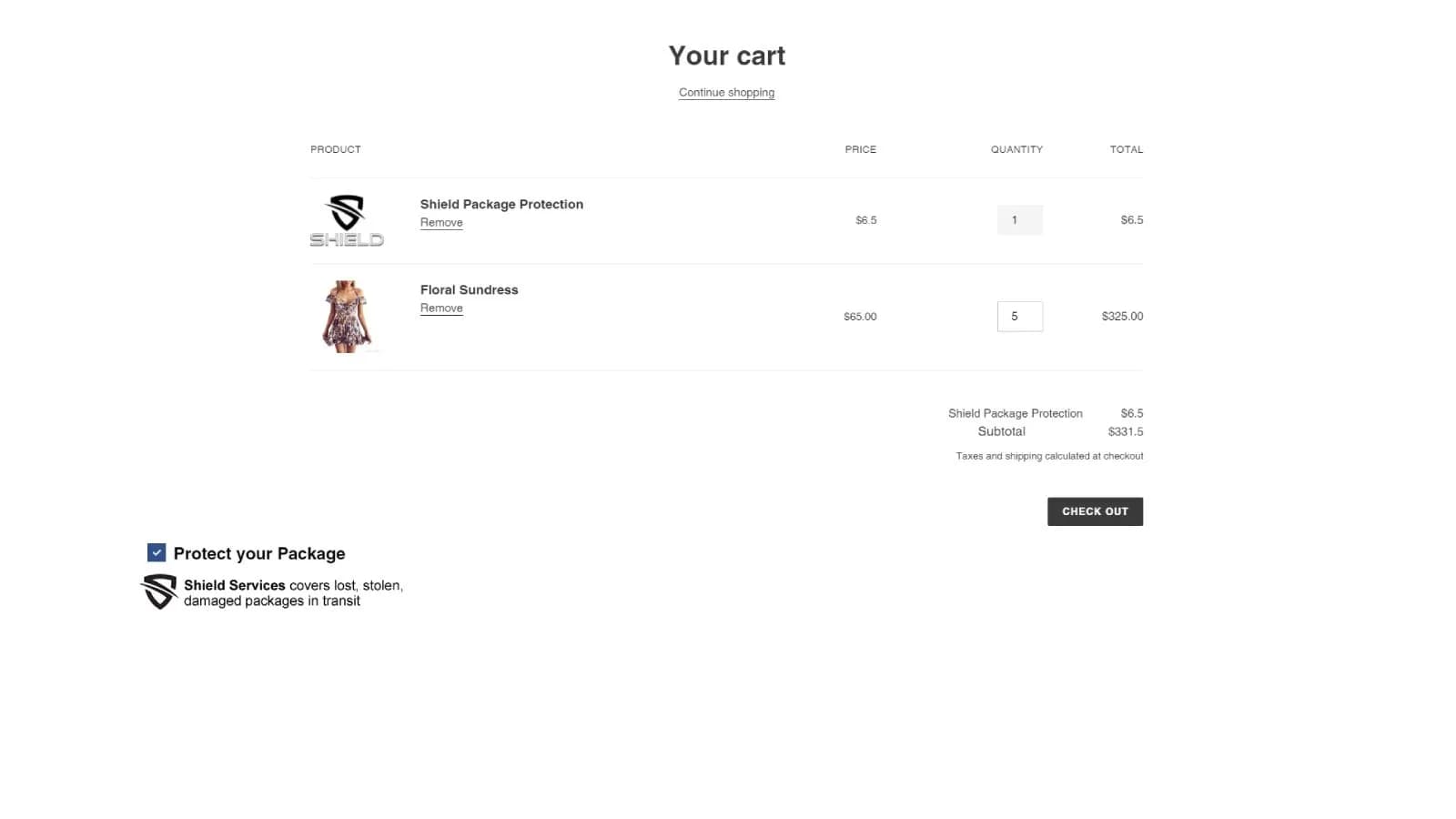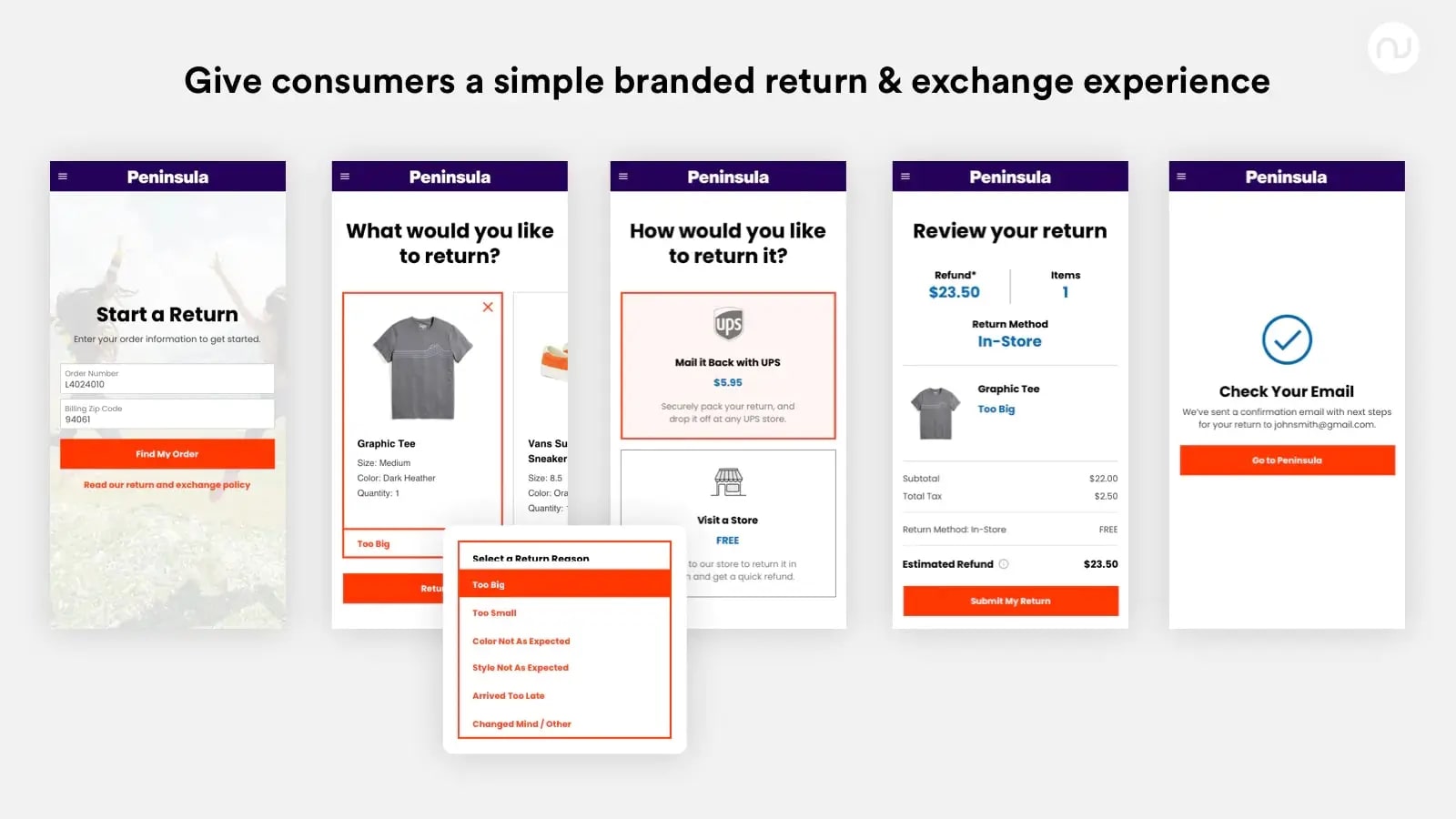The 7 Most Common Reasons for Returns in Shopify and How to Prevent Them
In the realm of e-commerce, where Shopify stands as a cornerstone for online businesses, the issue of product returns emerges as a formidable challenge for merchants. Despite the platform’s intuitive design and seamless integration, the specter of returns continues to loom, posing a potential threat to customer satisfaction and the overall success of online enterprises. Acknowledging and proactively addressing this concern is very important, as returns can become a significant pain point affecting both customers and merchants alike, impacting financial outcomes and eroding the trust painstakingly built over time.
This article embarks on a comprehensive exploration of “The 7 Most Common Reasons for Returns in Shopify and How to Prevent Them“. Drawing from invaluable industry insights and proven best practices, we aim to equip Shopify store owners with actionable strategies and effective solutions to mitigate return rates and elevate the overall shopping experience. Whether you are a seasoned e-commerce entrepreneur navigating the complexities of online retail or a novice embarking on your Shopify journey, this article serves as a vital resource. It guides you to fortify your digital storefront against the pitfalls associated with returns, ensuring that your online business not only thrives but consistently exceeds customer expectations. Let’s explore practical approaches to tackle the challenges of returns, ensuring a resilient and customer-centric online shopping environment.
The common reasons for returns in Shopify often include:
1. Size and fit issues
Returns on Shopify often stem from challenges related to sizing and fit. Among the prominent reasons behind product returns within the platform, the mismatch between customer expectations and the actual fit or size of the purchased apparel and footwear stands out. The online shopping experience, while offering unparalleled convenience, occasionally results in misjudgments on the customer’s part.
The intricacies of product listings, especially in the realm of apparel and accessories, can sometimes be misunderstood by customers, leading to misjudgments. In the case of clothing, discrepancies in sizing standards across brands or regions further compound the issue. Customers may order a size based on their usual preference, only to find that it does not align with the sizing conventions of the particular brand or origin.
Solution:
To address this issue, merchants can play a crucial role by enhancing the information available to customers during the decision-making process. Providing comprehensive product descriptions becomes imperative, detailing not only the design and material but also the specific measurements and characteristics of the item. Incorporating size charts is equally vital, offering customers a visual guide to better understand how the product corresponds to their body dimensions.
Moreover, merchants can utilize high-quality images showcasing the product from various angles to give customers a more realistic view. This comprehensive approach empowers customers to make informed choices, reducing the likelihood of returns due to size and fit issues and fostering a more satisfying and seamless online shopping experience on Shopify.
Read more: 10+ Best Size Chart Apps for Shopify Stores

2. You shipped the wrong product
The dispatch of incorrect products stands out as a primary cause for customer returns on Shopify due to a confluence of factors inherent in the e-commerce landscape. In the intricate process of order fulfillment, errors may stem from various stages, including order processing, picking, packing, and shipping. The complexity of managing diverse product catalogs and handling a multitude of orders daily increases the probability of oversight.
The online shopping experience lacks the tangible aspect of traditional retail, where customers can physically inspect their purchases. Any deviation from the expected product, be it in terms of variant, model, or specifications, can lead to dissatisfaction and prompt return requests.
Solution:
To mitigate the impact of shipping the wrong product, merchants must adopt stringent quality control measures. Implementing robust systems for order verification, employing barcode scanning technology, and instituting multi-stage checks before dispatch is imperative. Additionally, cultivating responsive customer support channels becomes pivotal, allowing merchants to promptly rectify errors, provide solutions, and ultimately salvage the customer experience.
By addressing the challenges associated with shipping inaccuracies, merchants not only minimize return rates but also cultivate trust and satisfaction among their customer base, fostering a resilient and positive relationship in the competitive landscape of e-commerce on the Shopify platform.
Read more: 10 Powerful Chatbot Apps for Shopify

3. The product was damaged or defective on delivery
“The Product Was Damaged or Defective on Delivery” is a prominent reason for customer returns on Shopify due to its substantial impact on the customer experience and satisfaction. In the intricate logistics of product transportation, goods are susceptible to mishandling, environmental factors, or inherent manufacturing defects that may compromise their integrity.
When customers receive damaged or defective items, it not only shatters their expectations but also erodes trust in the merchant’s commitment to quality. The online shopping experience lacks the immediacy of physical stores, making the initial product presentation and condition upon delivery crucial in shaping perceptions. Any deviation from the expected pristine state creates a sense of disappointment and prompts customers to initiate return requests.
Solution:
To address this challenge, sellers must prioritize effective packaging practices and partner with trusted shipping partners. Additionally, investing in quality control measures at the warehouse and fulfillment stages is critical in detecting and correcting defective products before they reach customers. Proactive customer support that quickly resolves concerns related to damaged or defective items plays a key role in restoring customer trust and loyalty. Provide insurance packages for necessary products so customers feel more secure during their shopping process.
Finally, by diligently managing product quality and condition throughout the supply chain, sellers can significantly reduce instances of damaged or defective deliveries, delivering a positive shopping experience. Extremely reliable for customers on the Shopify platform.
Read more: 8+ Best Shopify Shipping Insurance Apps

4. Delivery later than expected
The untimely delivery of products, surpassing the initially estimated timeframe, often generates dissatisfaction among customers and becomes a notable catalyst for return requests. Timely delivery is a crucial component of the overall customer experience, shaping perceptions of a merchant’s reliability and professionalism.
When a product arrives later than expected, it disrupts the customer’s anticipated timeline, causing inconvenience and potentially affecting plans or occasions for which the purchase was intended. This deviation from the promised delivery schedule can create a sense of disappointment and frustration. In the competitive landscape of e-commerce, where convenience and efficiency are paramount, delayed deliveries are perceived as a breach of trust.
Customers associate the fulfillment of delivery timelines with the merchant’s commitment to customer service. Late deliveries may lead customers to question the reliability of the entire shopping experience, prompting them to seek alternatives or initiate return processes.
Solution:
To resolve this, merchants must optimize logistics, provide accurate shipping estimates, and maintain transparent communication regarding any unforeseen delays. Proactive customer communication, such as timely updates on shipment status, can also play a crucial role in managing customer expectations and minimizing the likelihood of returns associated with delayed deliveries.
By emphasizing transparency, maintaining clear communication, and offering expedited options, merchants can navigate the complexities of shipping logistics more effectively. This proactive approach not only helps minimize delays but also contributes to an overall positive customer experience, reducing the likelihood of returns and fostering customer loyalty in the competitive landscape of e-commerce.
Read more: 10+ Best Shopify Estimated Delivery Date Apps

5. Customers no longer need the product
In the dynamic landscape of consumer preferences, customers may find that their initial purchase no longer aligns with their requirements or expectations.
The e-commerce journey involves a series of decision-making stages, from product discovery to final purchase. However, post-purchase considerations can prompt customers to reassess their needs, leading to a realization that the acquired product no longer serves a purpose or fits into their plans. This can be influenced by factors such as technological advancements, changing preferences, or the emergence of alternative solutions in the market. That’s why customers no longer need the product, which is also a cause for concern for store owners.
Solution:
To solve this challenge, sellers must focus on providing comprehensive product information, detailed specifications, and user reviews to assist customers in making informed decisions. Additionally, building a responsive customer support system can encourage customers to seek assistance or explore alternatives before initiating returns, potentially salvaging a sale. In addition, a solution that has been proven to be effective is to provide a clear return policy right during the purchasing process. You can set a rule that goods cannot be returned if they come from personal needs, thus minimizing this situation.
6. Refund policy is not clear
Unclear return policies stand as a significant catalyst for customer returns, as they introduce ambiguity and confusion into the post-purchase experience. When customers encounter vague or convoluted return policies on Shopify or any e-commerce platform, it creates uncertainty regarding the terms and conditions associated with product returns.
Clear and transparent return policies instill confidence in customers, providing them with a sense of security and understanding about the process. On the contrary, unclear policies may leave customers hesitant, fearing potential complications or hidden costs associated with returns. This lack of clarity can deter customers from initiating returns, or worse, lead to dissatisfaction when they discover unexpected hurdles during the process.
Solution:
To mitigate this issue, merchants should prioritize crafting concise, easily accessible, and transparent return policies. Clearly outlining the steps, timelines, and any associated costs builds trust with customers. Regular updates and communication regarding the return process can further enhance clarity and alleviate concerns. In an environment where customer satisfaction is paramount, having well-defined and customer-friendly return policies not only reduces return rates but also contributes to a positive and trustworthy shopping experience on the Shopify platform.
Read more: 15+ Best Shopify Returns Process Apps

7. Products didn’t match the description
The discrepancy between product descriptions and the actual delivered items is a prominent factor leading to customer returns on Shopify. When products don’t match their descriptions, it engenders a sense of disappointment and frustration among customers who expect a certain quality, functionality, or appearance based on the provided information.
Clear and accurate product descriptions are the cornerstone of an informed online shopping experience. Customers rely on these descriptions to make purchasing decisions, and when the received product falls short, it erodes trust in the merchant. This misalignment can encompass various aspects, including color, size, material, features, or overall performance.
Solution:
To address this challenge, merchants must prioritize meticulous product documentation. Detailed and precise descriptions, accompanied by high-quality images from multiple angles, provide customers with a comprehensive understanding of the product. Regular updates to product listings to reflect any changes or improvements also contribute to maintaining accuracy.
Additionally, fostering a responsive customer support system to address discrepancies swiftly can mitigate the impact of products not matching their descriptions. By ensuring transparency and alignment between product information and the delivered items, merchants can cultivate customer trust, reduce return rates, and enhance the overall satisfaction of the shopping experience on the Shopify platform.
Read more: Top 5 Shopify AI Product Description Apps

Conclusion
In conclusion, understanding and addressing common return reasons on Shopify are crucial for a thriving e-commerce venture. Merchants can minimize sizing and fit-related returns by investing in detailed product descriptions, size charts, and quality images. Transparent communication resolves shipping challenges, while robust packaging and quality control prevent product damages. Clear return policies accommodate evolving customer needs, reducing returns due to changing preferences. Emphasizing accurate product descriptions and customer-centric policies decreases instances of returns caused by unmet expectations. Proactive measures not only lower return rates but also build trust, customer satisfaction, and loyalty, contributing to a successful presence in the competitive Shopify landscape.








